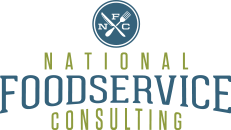
New Challenges
Many properties are challenged these days with a dwindling supply of available new staff member candidates. Whether due to increasing minimum pay rates, generational differences of staff desiring different work conditions and hours, competition with other types of employment, potential employees who would rather work remotely without interacting with customers or a host of other potential causes, the problem is real.
Strategies
Casinos are in the guest service/entertainment business. Service is just as important as it always has been in the areas that interact with customers. Casinos must evolve to follow the changes of operating a business with less manpower and the necessity to still deliver exceptional experiences for players in order to remain competitive within the marektplace.
Operators must decide what their strategy will be moving forward to deal with less staffing. This requires a sufficient level of customer facing staff members for players and casino customers. In some cases staffing can be streamlined by adding more technology, outsourcing some services that are currently performed by staff behind the scenes, changing outlet formats, adjusting business models, and by creating more efficient layouts and floor plans.
There are many options for addressing this new challenge
Adding and Using More Technology
Many players prefer using some level of technology for interactions, instead of waiting in line to speak with a staff member. Implementing technology that reduces customer “touch points” is a balancing act in the interest of guest service.
Some opportunities for streamlining customer facing positions is with the adoption of kiosks, mobile apps and the ability to allow players to transact some processes directly at a gaming position such as a slot machine (i.e. printing comps, redeeming offers, signing up for promotions, checking account balances, ordering beverages).
An example of this is occurring at some properties that are experimenting with technology that allows players to order beverages and cocktails directly from slot machines. Challenges to the performance of this new use of technology may be local liquor laws that determine when another cocktail can be served to a guest (often the first cocktail must be removed before serving the new one). Converting to this technology that allows ordering from slot machines can also de-personalize the guest experience by converting cocktail servers into beverage runners/delivery staff with much larger stations, little time to interact with players and almost no way to monitor the speed and amount of consumption of alcohol by the guests as required by liquor laws to avoid over-serving individuals beyond legal limits.
In customer-facing service positions servers may be assisted by converting to using handheld order-entry devices or self operated tabletop devices that allow ordering and payment for meals immediately at the table. Often when staffing is a challenge there is an excellent opportunity to add automated staff scheduling program software to increase the efficiencies of sales projections and staff use per hour. Though the conversion to more technology may be uncomfortable, the casino industry is very familiar with the process when it was experienced during the time when slot machines were converted to coinless operation. Coinless slots required changing equipment , eliminating the hard count process and ending the staff positions related to the coin/slot process. Workers were re-trained for other positions when the “inevitable conversion” to coinless slots occurred.
Reduction of Staff by Outsourcing
Outsourcing is another option for staffing reduction within the non guest-facing positions in areas such as back office, support, housekeeping, repairs/engineering, administrative, PBX, box office telephone sales, player services, surveillance, security, accounting, payroll, employee benefits, some areas of training, IT/IS, analysts, marketing, food and beverage production/preparation. Many job functions can be seamlessly performed from locations offsite by third party providers.
Some areas can be directly contracted to other providers such as cleaning, maintenance, repairs. In areas with reduced production needs due to outsourcing, such as rear kitchen production areas in the back of the house, facilities can be remodeled and reduced in size. From a culinary perspective, it is not about whether the staff has the knowledge and ability to make everything from scratch but how to deliver similar products without producing everything in-house when operating without sufficient staff. Proprietary recipes can be contracted out for offsite manufacturing. This not only reduces required staffing in-house but eliminates some of the food handling tracking with HACCP when products are not prepared, cooled, stored and reheated in-house. Outsourcing with specific tightly controlled recipes and standards can also increase consistency of products. The remaining kitchen staff needs to be proficient in reheating specially prepared products, performing “cooking to order” of many items such as meats, fried items etc. (that cannot be prepared offsite with the same quality results) and the final plating of items for service. Though outsourcing of production and services will increase the cost of goods of these items, the increased costs should balance against the reduction in the cost of labor and the reduction in the cost of staff benefits paid for by the casino.
Conversion of Operations
Casinos in many cases are reducing the amount of full service restaurant operations and converting to more quick service and fast casual service food and beverage outlets.
Additional opportunities exist in simplifying menus and what is offered by concentrating on keeping the most popular items in a smaller core menu and creating variety and interest with rotating specials offered frequently rather than extensive menu offerings all of the time.
As evidenced in the public restaurant industry, many customers are becoming more interested in quick service options verses full service experiences. This can be due to the increased menu prices forced by the higher salaries necessary to retain staffing, increased costs of goods and higher occupancy costs for operators. Often technology may be preferred by some customers who would rather order online for pick up/delivery that provides more convenience and speed rather than experience the full service model.
Redesigning Spaces and Layouts
At every opportunity when spaces and outlets are being reconfigured, re-concepted or simply remodeled it is time to perform time and motion analysis of all “steps to service” for every task and each staff member. How far are supplies located from service areas and guests? Eliminating extra steps by simplification, consolidation, and better storage locations of items can actually reduce staffing demands. When staff is able to serve more guests per labor hour due to more efficient working conditions their earnings may increase with these new improvements. Service levels may also improve for guests.
When kitchen production is performed offsite and automation is used in some final cooking production, allowing for smaller back kitchen production areas, there can also be benefits of converting to centralized kitchens, creating joint restaurant outlet-shared cooking lines and designing kitchen production areas with the ability to shut down certain equipment at slower times based upon business levels.
The Benefits
The staffing challenge is not all bad news. There are benefits for the casino being forced to reduce staffing positions when there are no available candidates. Each full-time staff member has a cost of benefits paid by the employer ranging from 30-40% above their base salary. Less onsite staff members means: less salary dollars in payroll, less office space required, less staff parking spaces required, less staff administrative support, smaller break areas, and a reduction in staff meal costs. All of these items reduce expenses for the casino.
For every staff position reduced: the savings can average (16 hours (2 – 8 hour shifts in a day) x $11.00 per hour x 365 days = $64,240 plus 35% benefits of $22,484) totaling over $86,000 per year reduction of cost delivered directly to the casino bottom line EBITA.
Even if staffing is not a challenge at a property, simply reviewing the application of staffing with a consideration of revising staff member placement and job function may result in a greater return on investment. An increase in guest service interaction by focusing more staff in customer facing service positions can return tremendous dividends resulting in increased: visitation, play, retention and attraction of new players.
The future
It appears that the trend of challenges in finding enough staff members will continue. It is not the end of the world but simply another evolution of the gaming industry and in fact the entire service industry. This will require a significant paradigm shift in operational thinking, practices, and functions. All of the answers for planning the next steps may not be found in-house. This may require looking at how other properties are addressing this challenge and engaging outside resources to help plan and implement the necessary steps for the survival of new staffing challenges.
read the original article in Indian Gaming Magazine April 2019 issue:
Operational Strategies for New Reduced Levels of Available Staff

12,601 Responses